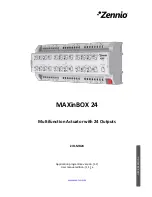
ZXDSL 9210 (V3.1) Broadband Universal Access Equipment Technical Manual
1-8
waiting time is far shorter than that of IP packets since an ATM cell is only 53 bytes
long. These advantages of ATM make it an extremely popular technology in the whole
ADSL-based service network. Even American National Standard Institute (ANSI) has
listed ATM as an ADSL-supported transfer mode.
The Virtual Connection (VC) concept has been introduced into the ATM switching
technology. ATM is a connection-oriented technology different from the traditional
circuit-switching in connection. In traditional circuit switching, a connection line is
established via a call before both parties begin communication. This line has a fixed
bandwidth, and the connection will not be released until the communication is over.
ATM, on the other hand, adopts a VC connection concept: When establishing a
connection, ATM requests network of traffic description and QoS requirement.
Network pre-allocates resources for this connection alone, and network resource is
occupied only when cells are actually transmitted. This is bandwidth.
VC is a general concept and actually consists of Virtual Channel (VC) and Virtual Path
(VP). A VP provides the communication capability for transferring ATM cells between
two adjacent ATM entities and is identified with a VP Identifier (VPI). There are two
types of VPs: Permanent Virtual Circuit (PVC) and Switched Virtual Circuit (SVC).
PVC establishes a semi-permanent connection in a VP via network management, while
SVC is a connection established dynamically by means of signal processing. A VC is
composed of multiple VPs, and is identified with a VP Identifier (VPI). A group of VCs
with the same VPI form a VP. The relationship between VP and VC is described in Fig.
1.3-2.
VPi
VC1
VC2
VCn
Fig. 1.3-2 Relationship between VP and VC
VPI and VCI make sense locally only. Each VPI/VCI is processed at the corresponding
VP/VC switching node, and the same VPI/VCI value in different VP/VC link section
does not represent the same “virtual connection”.
















































